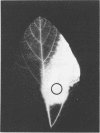Abstract
Radioactive sucrose, l-leucine, l-glutamate, and γ-aminobutyrate were applied exogenously to abraded areas of soybean leaves. The three amino acids were translocated with similar velocities and mass transfer rates on a molar basis, although they were metabolized differently in the sink tissue. The concentration dependence of leucine translocation showed a triphasic saturation response, while sucrose translocation showed a biphasic saturation response to increasing concentration. Apparent Km and Vmax for leucine and sucrose loading in the phloem differed. Both leucine and sucrose translocation were inhibited by uncouplers, high K+, and p-chloromercuribenzenesulfonic acid. Treatment with 0.8 m sorbitol had little effect on sucrose translocation but stimulated leucine translocation, indicating an apoplastic route of loading for leucine. No effect on mass transfer rates was observed when sucrose and amino acids were applied exogenously together. These data provide evidence that phloem loading of amino acids and sucrose is mediated by different and separate carriers, both being dependent on an energy-requiring mechanism.
Full text
PDF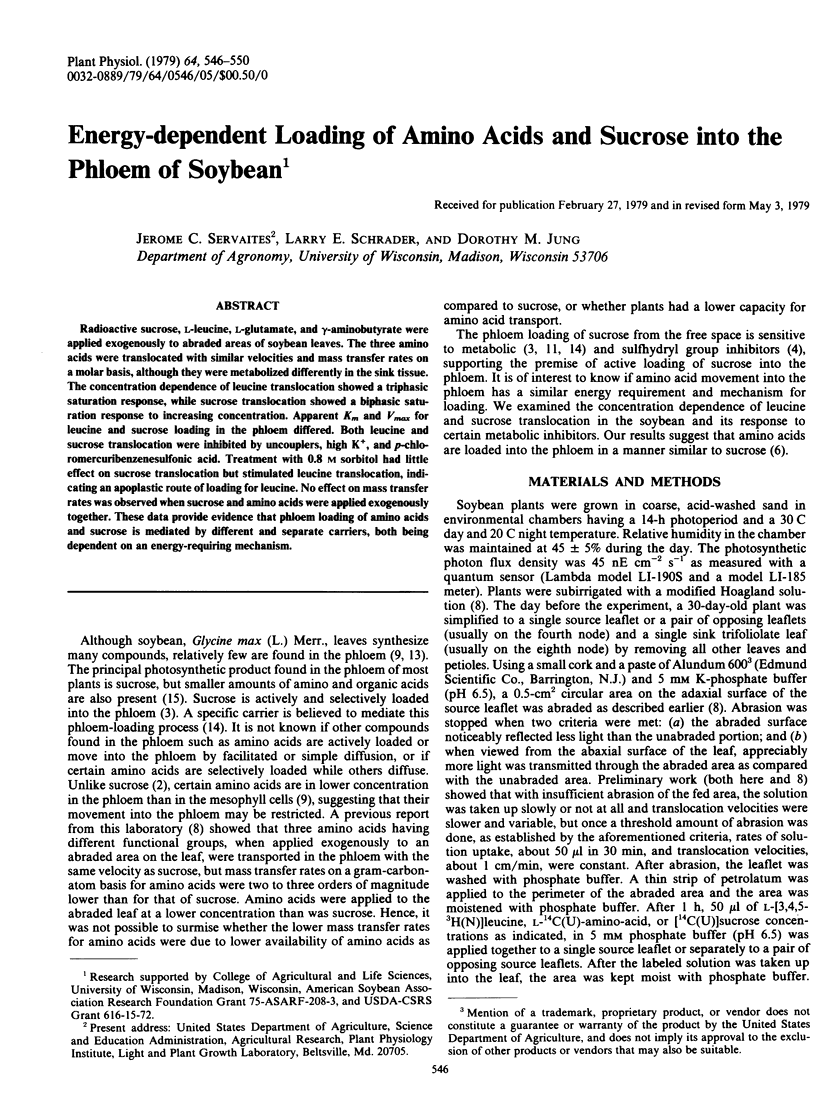
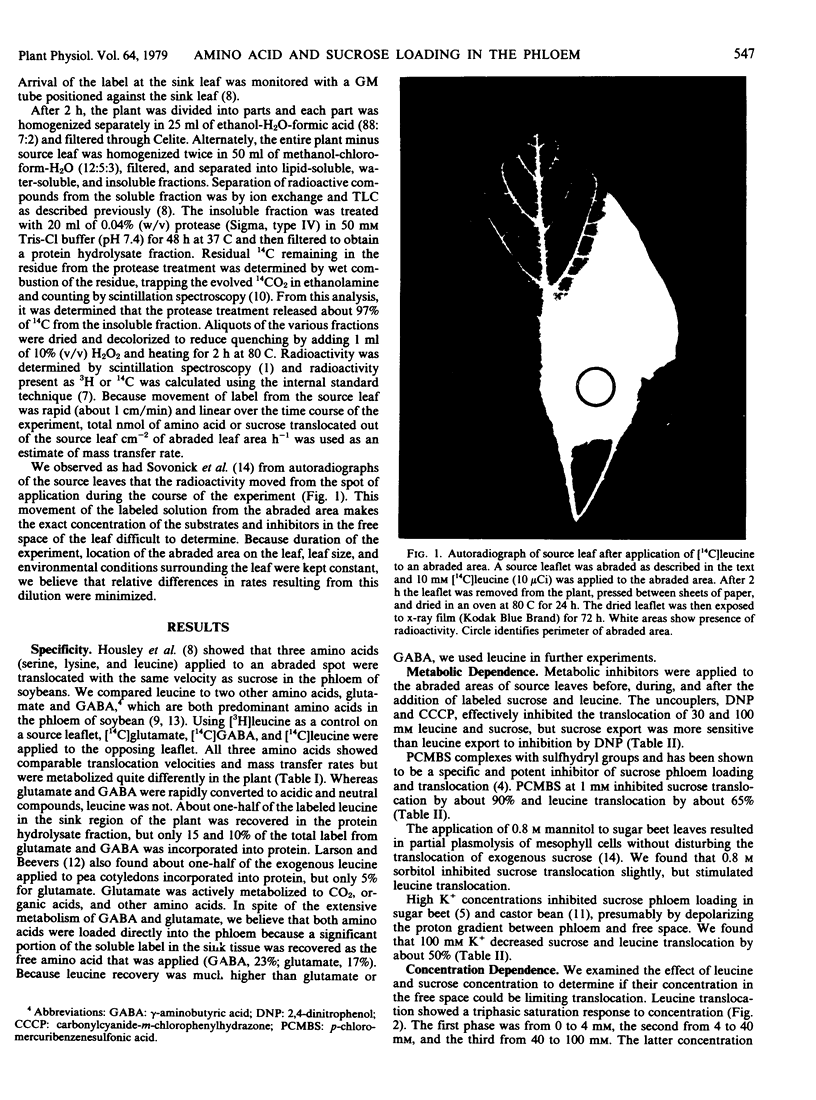
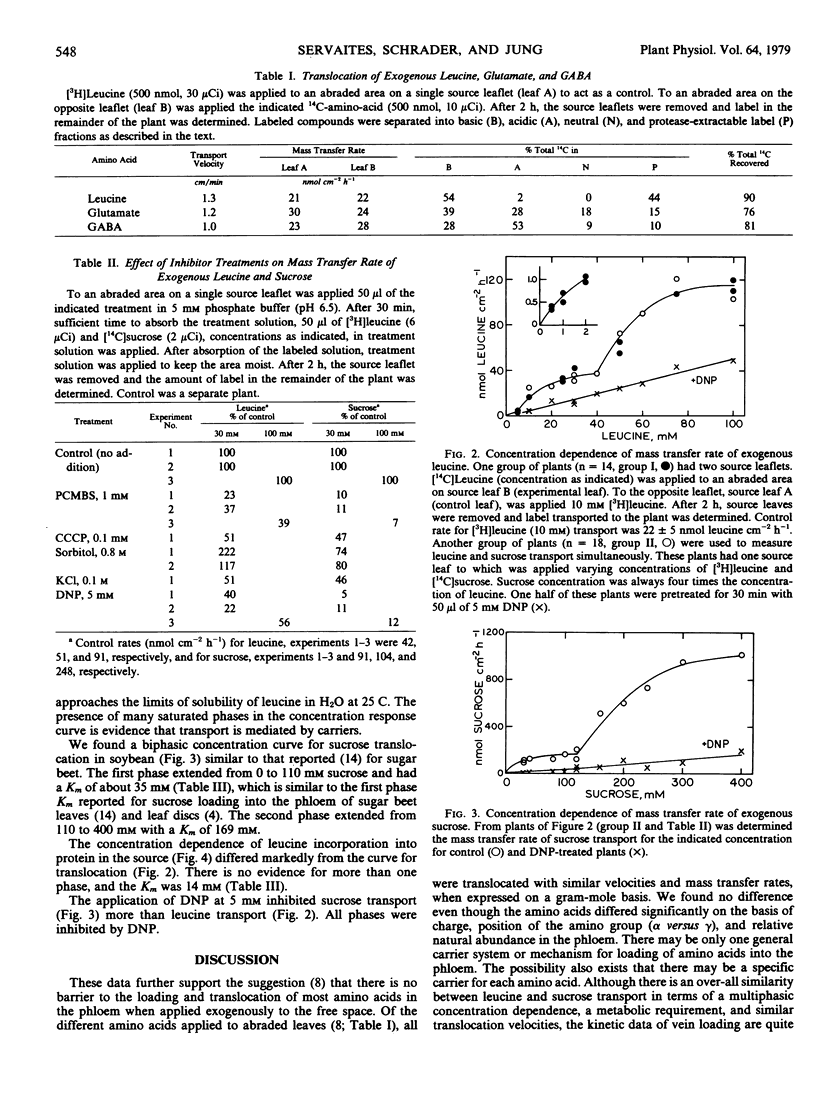
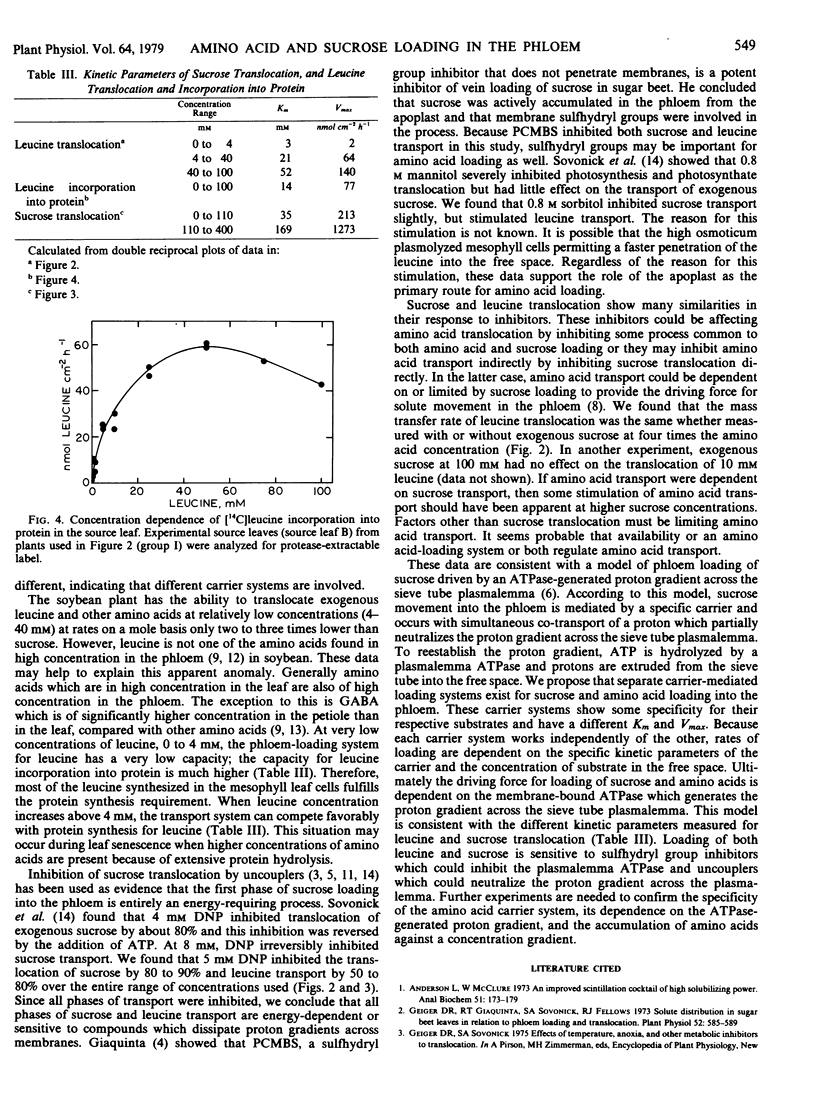

Images in this article
Selected References
These references are in PubMed. This may not be the complete list of references from this article.
- Anderson L. E., McClure W. O. An improved scintillation cocktail of high-solubilizing power. Anal Biochem. 1973 Jan;51(1):173–179. doi: 10.1016/0003-2697(73)90465-x. [DOI] [PubMed] [Google Scholar]
- Geiger D. R., Giaquinta R. T., Sovonick S. A., Fellows R. J. Solute distribution in sugar beet leaves in relation to Phloem loading and translocation. Plant Physiol. 1973 Dec;52(6):585–589. doi: 10.1104/pp.52.6.585. [DOI] [PMC free article] [PubMed] [Google Scholar]
- Giaquinta R. Evidence for Phloem loading from the apoplast: chemical modification of membrane sulfhydryl groups. Plant Physiol. 1976 Jun;57(6):872–875. doi: 10.1104/pp.57.6.872. [DOI] [PMC free article] [PubMed] [Google Scholar]
- Giaquinta R. Phloem Loading of Sucrose: pH Dependence and Selectivity. Plant Physiol. 1977 Apr;59(4):750–755. doi: 10.1104/pp.59.4.750. [DOI] [PMC free article] [PubMed] [Google Scholar]
- Housley T. L., Peterson D. M., Schrader L. E. Long distance translocation of sucrose, serine, leucine, lysine, and carbon dioxide assimilates: I. Soybean. Plant Physiol. 1977 Feb;59(2):217–220. doi: 10.1104/pp.59.2.217. [DOI] [PMC free article] [PubMed] [Google Scholar]
- Housley T. L., Schrader L. E., Miller M., Setter T. L. Partitioning of C-photosynthate, and long distance translocation of amino acids in preflowering and flowering, nodulated and nonnodulated soybeans. Plant Physiol. 1979 Jul;64(1):94–98. doi: 10.1104/pp.64.1.94. [DOI] [PMC free article] [PubMed] [Google Scholar]
- Larson L. A., Beevers H. Amino Acid Metabolism in Young Pea Seedlings. Plant Physiol. 1965 May;40(3):424–432. doi: 10.1104/pp.40.3.424. [DOI] [PMC free article] [PubMed] [Google Scholar]
- Ziegler H. Biochemical aspects of phloem transport. Symp Soc Exp Biol. 1974;(28):43–62. [PubMed] [Google Scholar]



